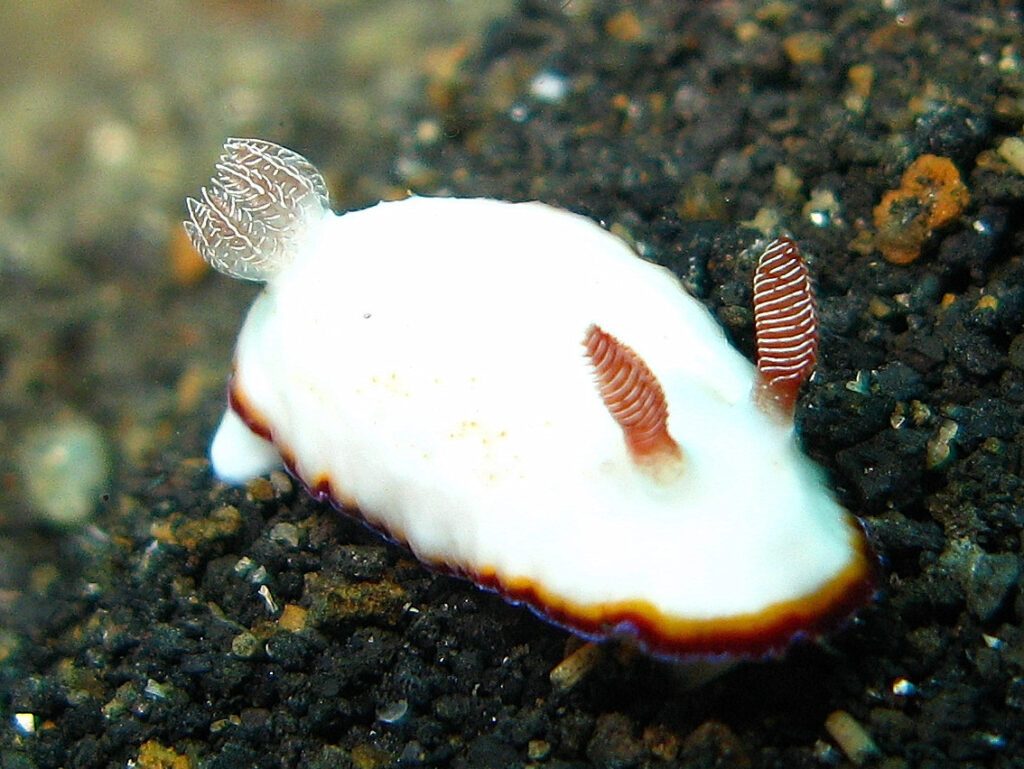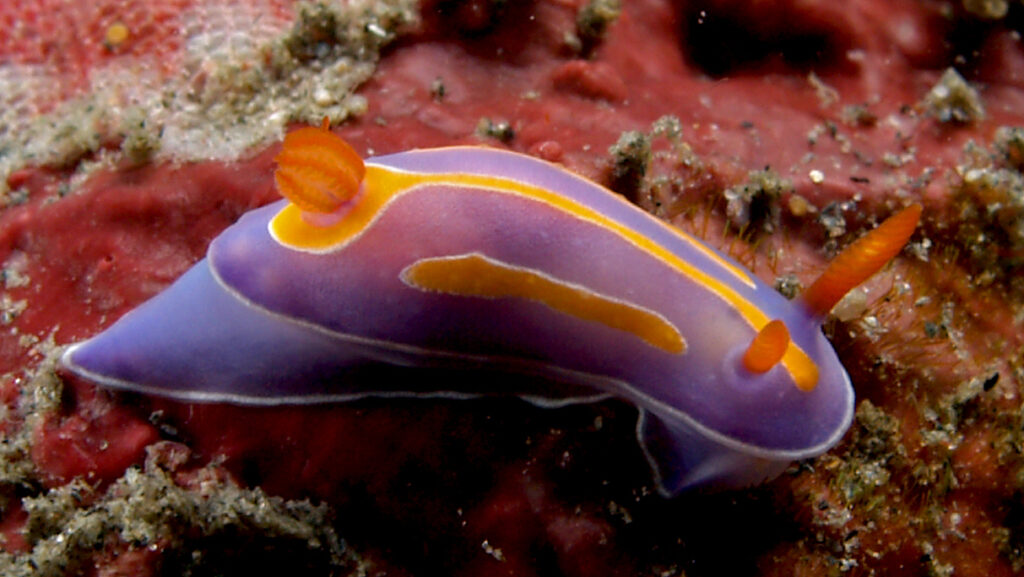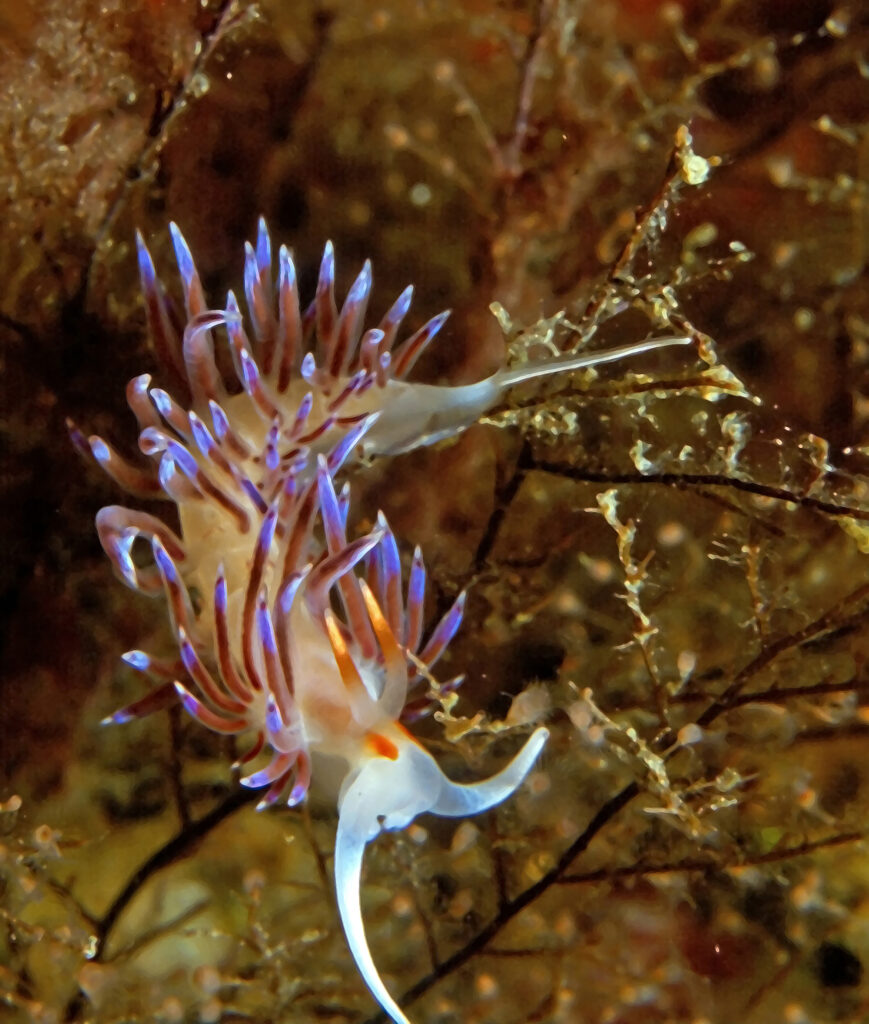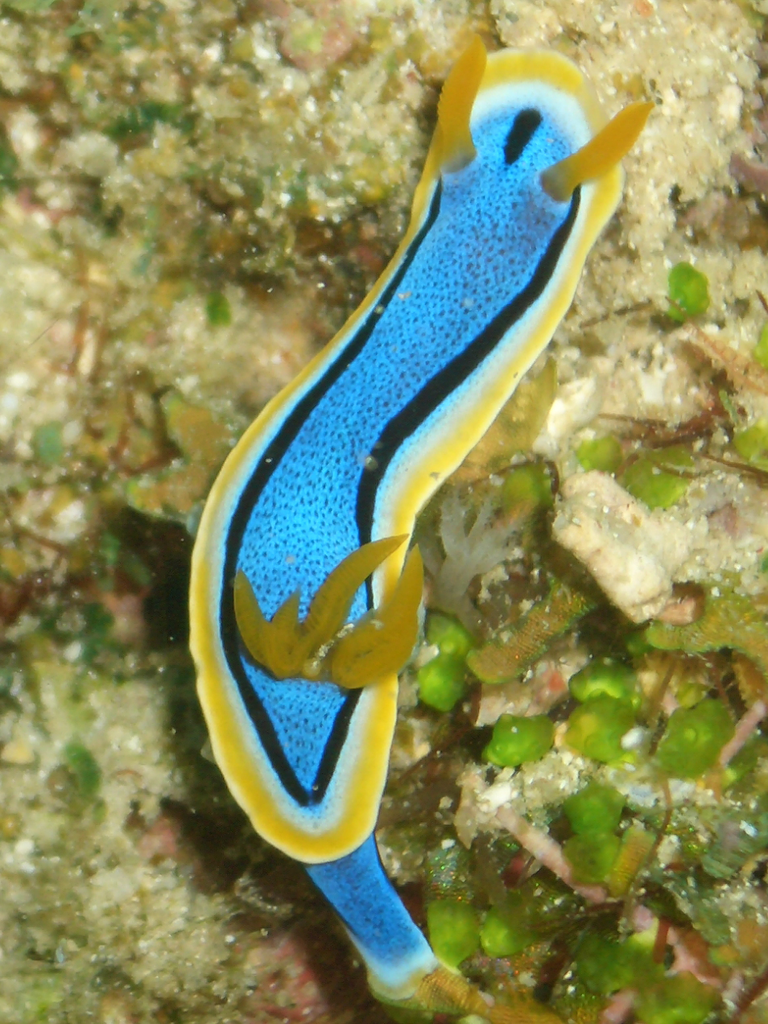The Sea Bunny which in the science world is called the Jorunna parva is a…put on your nerd hat for a second: a dorid nudibranch, a shell-less marine gastropod mollusc in the family Discodorididae. So it’s basically a fluffy looking nudibranch.

Nudibranchs come all different color combinations with various numbers of “bunny ear” looking organs called rhinophores. Check out these:



So what do the rhinophores do exactly? They are a sensory organ that helps the sea slugs sense it’s surroundings. They work by using a physiological process called chemoreception. This means that the rhinophores respond to different types of chemicals and helps the sea slug identify their mates and find food.
Speaking of food, what do Sea Bunnies and Nudibranches in general eat? Sea sponges which contain toxins. Those toxins – specifcally mycalolide B – are used for cancer treatments. The mycalolide B reacts with the cancer cells and limits their ability to spread. Pretty cool, huh?
Another cool fact about Sea Bunnies is that they are hermaphrodites. This means that they produce both sperm and egg cells. However, they cannot fertilize the eggs themselves – they need another Sea Bunny for that.
They live in the oceans off of Japan, Philippines, Tanzania, Papua New Guinea, Seychelles and Réunion. They spend their lives primarily on the sea floor where food is plentiful and the water is of a tropical temperature.
And that’s the Sea Bunny! Pretty cool, right?
